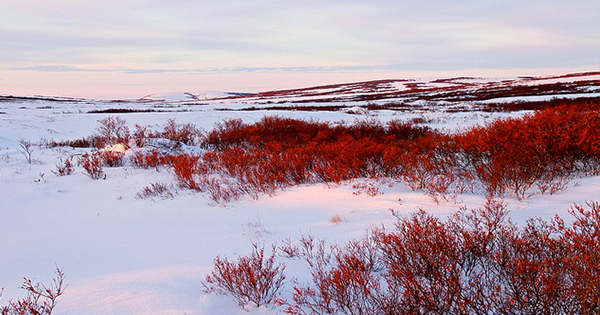
I had the radio on last Tuesday while hefting a 19-pound turkey into a huge pot of chilled brine sitting on my kitchen floor. The station was airing Talk of Alaska, a weekly statewide talk show, and the topic that morning was food security, specifically wintertime food security in the face of climate change. When ice and snow are less reliable, hindering travel in the Bush, what is the impact on rural Alaskans, many of whose families and ancestors have relied on traditional foods for thousands of years?
As it has been in recent years, the weather was too warm to leave the turkey brining in a pot outside. As I knelt on the floor, scooping brine out of the pot to lower the liquid level so I could put the whole arrangement into the fridge without too much mess, one of the guests on the program, a representative from the Inuit Circumpolar Council, discussed how food security was not jut about calories. Food security, she explained, is about language, sharing, and spiritual wellness. It’s about culture, family, community, health, relationships, and place—and about the interconnections between these things.
I got the brine recipe a few years ago from Barb, the woman who owns a furniture and décor store in town. It calls for chopped leeks, onions, and carrots, as well as fennel, hot pepper, and star anise. When I lost the recipe last year, she made me a few extra copies and left them for me at her shop. In exchange, I dropped off a jar of relish I’d made out of our cold frame zucchinis.
In rural areas of Alaska, where everything comes in by air or sea, a gallon of milk can cost upwards of $11. So being able to harvest food from the land is often an economic necessity. And winter—when rivers are frozen and the land is smoothed by a layer of snow, making endless miles of landscape safely traversable—is a critical time for Alaska Natives and other rural residents to get out and hunt.
Beyond economic necessity, harvesting and hunting wild foods in Alaska maintain culture and community. As the radio guest also said, it is a rite of passage for a young Native man to give a fish he caught or a slab of caribou he shot to an elder, thus becoming a provider.
This brine is a funny thing I now have in common with Barb, in addition to an acquaintanceship I have with her daughter who has children the same age as my own. It’s no ancient tradition, but it is a tie.
As I mopped up the mess on the floor after putting the pot into the fridge, I thought about the give and take of food and how it underscores so much of life in Alaska, even here in Homer, on the road system, where we’ve got mainstream grocery stores. As I was prepping my store-bought bird, my friend Rebecca was killing and cleaning her two home-raised turkeys. She gave one to a couple who took her under their wing 20 years ago when she was a 17-year-old greenhorn working her first boat job far out in western Alaska. The husband has late-stage cancer. I get the sense that this bird, which Rebecca has pampered since she got it as a chick last spring, is the most profound way she can say thank you.

